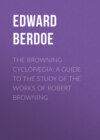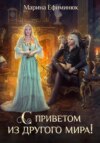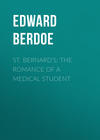Kitabı oku: «The Browning Cyclopædia: A Guide to the Study of the Works of Robert Browning»
I gratefully Dedicate these pages
TO
DR. F. J. FURNIVALL
AND
MISS E. H. HICKEY,
THE FOUNDERS OF
THE BROWNING SOCIETY
PREFACE TO THE SECOND EDITION
The demand for a second edition of this work within three months of its publication is a sufficient proof that such a book meets a want, notwithstanding the many previous attempts of a more or less partial character which have been made to explain Browning to “the general.” With the exception of certain superfine reviewers, to whom nothing is obscure – except such things as they are asked to explain without previous notice – every one admits that Browning requires more or less elucidation. It is said by some that I have explained too much, but this might be said of most commentaries, and certainly of every dictionary. It is difficult to know precisely where to draw the line. If I am not to explain (say for lady readers) what is meant by the phrase “De te fabula narratur,” I know not why any of the classical quotations should be translated. If Browning is hard to understand, it must be on account of the obscurity of his language, of his thought, or the purport of his verses; very often the objection is made that the difficulty applies to all these. I have not written for the “learned,” but for the people at large. The Manchester Guardian, in a kindly notice of my book, says “the error and marvel of his book is the supposition that any cripple who can only be crutched by it into an understanding of Browning will ever understand Browning at all.” There are many readers, however, who understand Browning a little, and I hope that this book will enable them to understand him a great deal more: though all cripples cannot be turned into athletes, some undeveloped persons may be helped to achieve feats of strength.
A word concerning my critics. No one can do me a greater service than by pointing out mistakes and omissions in this work. I cannot hope to please everybody, but I will do my best to make future editions as perfect as possible.
E. B.
March 1892.
PREFACE
I make no apology for the publication of this work, because some such book has long been a necessity to any one who seriously proposes to study Browning. Up to its appearance there was no single book to which the leader could turn, which gave an exposition of the leading ideas of every poem, its key-note, the sources – historical, legendary, or fanciful – to which the poem was due, and a glossary of every difficult word or allusion which might obscure the sense to such readers as had short memories or scanty reading. It would be affectation to pretend to believe that every educated person ought to know, without the aid of such a work as this, what Browning means by phrases and allusions which may be found by hundreds in his works. The wisest reader cannot be expected to remember, even if he has ever learned, a host of remote incidents in Italian history, for example, to say nothing of classical terms which “every schoolboy” ought to know, but rarely does. Browning is obscure, undoubtedly, if a poem is read for the first time without any hint as to its main purport: the meaning in almost every case lies more or less below the surface; the superficial idea which a careless perusal of the poem would afford is pretty sure to be the wrong one. Browning’s poetry is intended to make people think, and without thought the fullest commentary will not help the reader much. “I can have little doubt,” said the poet, in his preface to the First Series of Selections from his works, “that my writing has been in the main too hard for many I should have been pleased to communicate with; but I never designedly tried to puzzle people, as some of my critics have supposed. On the other hand, I never pretended to offer such literature as should be a substitute for a cigar or a game at dominoes to an idle man. So, perhaps, on the whole, I get my deserts, and something over – not a crowd, but a few I value more.” As for my own qualifications for the task I have undertaken, I can only say that I have attended nearly every meeting of the Browning Society from its inauguration; I have read every book, paper, and article upon Browning on which I could lay my hands, have gone over every line of the poet’s works again and again, have asked the assistance of literary friends in every difficulty, and have pegged away at the obscurities till they seemed (at any rate) to vanish. It is possible that a scientific education in some considerable degree assists a man who addresses himself to a task of this sort: a medical man does not like to be beaten by any difficulty which common perseverance can conquer; when one has spent days in tracing a nerve thread through the body to its origin, and through all its ramifications, a few visits to the library of the British Museum, or a few hours’ puzzling over the meaning of a difficult passage in a poem, do not deter him from solving a mystery, – and this is all I can claim. I have not shirked any obscurities; unlike some commentators of the old-fashioned sort, who in dealing with the Bible carefully told us that a score meant twenty, but said nothing as to the meaning of the verse in Ezekiel’s dream about the women who wept for Tammuz – but have honestly tried to help my readers in every case where they have a right to ask such aid. Probably I have overlooked many things which I ought to have explained. It is not less certain that some will say I have explained much that they already knew. I can only ask for a merciful judgment in either case. I am quite anxious to be set right in every particular in which I may be wrong, and shall be grateful for hints and suggestions concerning anything which is not clear. I have to thank Professor Sonnenschein for permission to publish his valuable Notes to Sordello, with several articles on the history of the Guelf and Ghibelline leaders: these are all indicated by the initial [S.] at the end of each note or article. I am grateful also to Mr. A. J. Campbell for permission to use his notes on Rabbi Ben Ezra. I have also to thank Dr. Furnivall, Miss Frances Power Cobbe, and the Very Rev. Canon Akers, M.A., for their kindness in helping me on certain difficult points which came within their lines of study. It would be impossible to read the works of commentators on Browning for the years which I have devoted to the task without imbibing the opinions and often insensibly adopting the phraseology of the authors: if in any case I have used the ideas and language of other writers without acknowledging them, I hope it will be credited to the infirmity of human nature, and not attributed to any wilful appropriation of other men’s and women’s literary valuables. As for the poet himself, I have largely used his actual words and phrases in putting his ideas into plain prose; it has not always been possible, for reasons which every one will understand, to put quotation marks to every few words or portions of lines where this has occurred. When, therefore, a beautiful thought is expressed in appropriate language, it is most certainly not mine, but Browning’s. My only aim has been to bring the Author of the vast body of literature to which this book is an introduction a little nearer to the English and American reading public; my own opinions and criticisms I have endeavoured as much as possible to suppress. In the words of Dr. Furnivall, “This is a business book,” and simply as such I offer it to the public.
Edward Berdoe.
London, November 28th, 1891.
BOOKS, ESSAYS, ETC., WHICH ARE ESPECIALLY USEFUL TO THE BROWNING STUDENT
BIOGRAPHICAL WORKS
Life of Robert Browning. By Mrs. Sutherland Orr. London: 1891.
Life of Robert Browning. By William Sharp. London: 1890.
On the whole, Mr. Sharp’s Biography will be found the more useful for the student. It contains an excellent Bibliography by Mr. John P. Anderson of the British Museum, and a Chronological List of the Poet’s Works.
Robert Browning: Chief Poet of the Age. By W. G. Kingsland. London: 1890. Excellent for beginners.
Robert Browning: Personalia. By Edmund Gosse. Boston: 1890.
WORKS OF CRITICISM AND EXPOSITION
Robert Browning: Essays and Thoughts. By John T. Nettleship. London: 1868. Artistic and suggestive.
Stories from Robert Browning. By F. M. Holland; with Introduction by Mrs. Sutherland Orr. London: 1882.
A Handbook to the Works of Robert Browning. By Mrs. Sutherland Orr. London: 1885.
An Introduction to the Study of Browning. By Arthur Symons. London: 1886. Intensely sympathetic and appreciative.
A Bibliography of Robert Browning, from 1833 to 1881. By Dr. F. J. Furnivall. 1881.
An Introduction to the Study of Robert Browning’s Poetry. By Hiram Corson. Boston: 1888.
Studies in the Poetry of Robert Browning. By James Fotheringham. London: 1887.
Browning Guide Book. By George Willis Cooke. Boston: 1891.
Strafford: a Tragedy. With Notes and Preface, by E. H. Hickey, and Introduction by S. R. Gardiner. London: 1884.
Browning and the Christian Faith. The Evidences of Christianity from Browning’s Point of View. By Edward Berdoe. London: 1896.
Browning as a Philosophical Religious Teacher. By Prof. Henry Jones. Glasgow: 1891.
Browning’s Message to His Time: His Religion, Philosophy and Science. By Edward Berdoe. London: 1890.
THE BROWNING SOCIETY’S PUBLICATIONS
The Browning Society’s Papers, Part I. Vol. I., 1881-4, pp. 1-116 (presented by Dr. Furnivall). [1881-2.
1. A Reprint of Browning’s Introductory Essay to the 25 spurious Letters of Percy Bysshe Shelley, 1852: On the Objective and Subjective Poet, on the Relation of the Poet’s Life to his Work; on Shelley, his Nature, Art, and Character.
2. A Bibliography of Robert Browning, 1833-81: Alphabetical and Chronological Lists of his Works, with Reprints of discontinued Prefaces, of Ben Karshook’s Wisdom, partial collations of Sordello 1840, 1863, and Paracelsus 1835, 1863, etc., and with Trial-Lists of the Criticisms on Browning, Personal Notices of him, etc., by F. J. Furnivall.
The Browning Society’s Papers, Part II. Vol. I., 1881-4, pp. 117-258. [1881-2.
3. Additions to the Bibliography of R. Browning, by F. J. Furnivall. 1. Browning’s Acted Plays. 2. Fresh Entries of Criticisms on Browning’s Works. 3. Fresh Personal Notices of Browning. 4. Notes on Browning’s Poems and my Bibliography. 5. Short Index.
4. Mr. Kirkman’s Address at the Inaugural Meeting of the Society, October 28th, 1881.
5. Mr. Sharpe’s Paper on “Pietro of Abano” and “Dramatic Idyls, Series II.”
6. Mr. Nettleship’s Analysis and Sketch of “Fifine at the Fair.”
7. Mr. Nettleship’s Classification of Browning’s Poems.
8. Mrs. Orr’s Classification of Browning’s Poems.
9. Mr. James Thomson’s Notes on The Genius of Robert Browning.
10. Mr. Ernest Radford on The Moorish Front to the Duomo of Florence, in “Luria,” I., pp. 122-132.
11. Mr. Ernest Radford on The Original of “Ned Bratt’s” Dramatic Lyrics, I., pp. 107-43.
12. Mr. Sharpe’s Analysis and Summary of Fifine at the Fair.
The Browning Society’s Papers, Part III. Vol. I., 1881-4, pp. 259-380, with Abstract, pp. 11-482. [1882-3.
13. Mr. Bury on Browning’s Philosophy.
14. Prof. Johnson on Bishop Blougram.
15. Prof. Corson on Personality, and Art as its Vice-agent, as treated by Browning.
16. Miss Beale on The Religious Teaching of Browning.
17. A Short Account of the Abbé Vogler (“Abt Vogler”). By Miss E. Marx.
18. Prof. Johnson on Science and Art in Browning.
The Monthly Abstract of such papers as have not been printed in full, and of the Discussions on all that have been discussed. Nos. I. – X.
Illustrations to Browning’s Poems. Part I.: Photographs of (a) Andrea del Sarto’s Picture of Himself and his Wife, in the Pitti Palace, Florence, which suggested Browning’s poem Andrea del Sarto; (b) Fra Lippo Lippi’s ‘Coronation of the Virgin,’ in the Accademia delle belle Arti, Florence (the painting described at the end of Browning’s Fra Lippo); and (c) Guercino’s ‘Angel and Child,’ at Fano (for The Guardian Angel); with an Introduction by Ernest Radford. [1882-3.
Illustrations to Browning’s Poems. Part II.3 (d) A photo-engraving of Mr. C. Fairfax Murray’s drawing of Andrea del Sarto’s Picture named above. (e) A Woodburytype copy of Fredelle’s Cabinet Photograph of Robert Browning in three sizes, to bind with the Society’s Illustrations, and Papers, and Browning’s Poems: presented by Mrs. Sutherland Orr. (f) Reductions in fcap. 8vo, to bind with Browning’s Poems, of d, b, c, above, and of (g) the engraving of Guercino’s First Sketch for his “Angel and Child.” [1882-3.
The Browning Society’s Papers, Part IV. Vol. I., 1881-4, pp. 381-476, with Abstract, pp. 494-845 and Reports, i-xvi. [1883-4.
19. Mr. Nettleship on Browning’s Intuition, specially in regard to Music and the Plastic Arts.
20. Prof. B. F. Westcott on Some Points in Browning’s View of Life.
21. Miss E. D. West on One Aspect of Browning’s Villains.
22. Mr. Revell on Browning’s Poems on God and Immortality as bearing on Life here.
23. The Rev. H. J. Bulkeley on “James Lee’s Wife.”
24. Mrs. Turnbull on “Abt Vogler.”
The Monthly Abstract of the Proceedings of Meetings Eleven to Eighteen.
First and Second Reports of the Committee (1881-2 and 1882-3).
The Browning Society’s Papers, Part V. Vol. I., 1881-4, pp. 477-502, with Abstract and Notes and Queries, pp. 856-1537, and Report, pp. xvii-xxiii. [1884-5.
25. Mr. W. A. Raleigh on Some Prominent Points in Browning’s Teaching.
26. Mr. J. Cotter Morison on “Caliban on Setebos,” with some Notes on Browning’s Subtlety and Humour.
27. Mrs. Turnbull on “In a Balcony.”
The Monthly Abstract of the Proceedings of Meetings Nineteen to Twenty-six, including “Scraps” contributed by Members.
Third Report of the Committee, 1883-4.
Illustration, Part III. Presented by Sir F. Leighton, P.R.A., etc., Vice-President of the Browning Society. A Woodburytype Engraving of Sir Frederick Leighton’s picture (in the possession of Sir Bernhard Samuelson, Bart., M.P.) of “Hercules contending with Death for the Body of Alkestis” (Balaustion’s Adventure).
[Part VI. of the Browning Society’s Papers, a Second Supplement to Parts I. and II., with illustrations, is in the press.]
The Browning Society’s Papers, Part VII. Vol. II., 1885-90, (being Part I. of Vol. II.), pp. 1-54, with Abstract and Notes and Queries, 18-889, i. – viii., and Appendix, 1-16. [1885-6.
28. Mr. Arthur Symons’ Paper, Is Browning Dramatic?
29. Prof. E. Johnson on “Mr. Sludge the Medium.”
30. Dr. Berdoe on Browning as a Scientific Poet.
The Monthly Abstract of Proceedings of Meetings Twenty-seven to Thirty-three; Notes and Queries, etc.; Fourth Annual Report; Programme of the Annual Entertainment at Prince’s Hall, etc.
The Browning Society’s Papers, Part VIII. Vol. II., 1885-90, pp. 55-146, with Abstract and Notes and Queries, 8910-16411, and Report i-vii. [1886-7.
31. Mr. J. T. Nettleship on The Development of Browning’s Genius in his Capacity as Poet or Maker.
32. Mr. J. B. Bury on “Aristophanes’ Apology.”
33. Mr. Outram on The Avowal of Valence (Colombe’s Birthday).
34. Mr. Albert Fleming on “Andrea del Sarto.”
35. Mr. Howard S. Pearson on Browning as a Landscape Painter.
36. Rev. H. J. Bulkeley on The Reasonable Rhythm of some of Mr. Browning’s Poems.
37. Prof. C. H. Herford on “Hohenstiel-Schwangau.”
Abstracts of all Meetings held, Notes and Queries, Fifth Annual Report, etc.
Reprint of the First Edition of Browning’s Pauline. [1886-7.
The Browning Society’s Papers, Part IX. (being Part III. of Vol. II.). [1887-8.
38. Dr. Todhunter on The Performance of “Strafford.”
39. Mrs. Glazebrook on “A Death in the Desert.”
40. Dr. Furnivall on A Grammatical Analysis of “O Lyric Love.”
41. Mr. Arthur Symons on “Parleyings with Certain People.”
42. Miss Helen Ormerod on The Musical Poems of Browning.
Abstracts of all Meetings held, Notes and Queries, Sixth Annual Report, etc.
The Browning Society’s Papers, Part X. (being Part IV. of Vol. II.). [1888-9.
43. Mr. Revell on Browning’s Views of Life.
44. Dr. Berdoe on Browning’s Estimate of Life.
45. Prof. Barnett on Browning’s Jews and Shakespeare’s Jew.
46. Miss Helen Ormerod on Abt Vogler, the Man.
47. Miss C. M. Whitehead on Browning as a Teacher of the Nineteenth Century.
48. Miss Stoddart on “Saul.”
Abstracts of all Meetings held, Notes and Queries, Seventh Annual Report, etc.
The Browning Society’s Papers, Part XI. (being Part V. of Vol. II.). [1889-90.
49. Dr. Berdoe on Paracelsus: the Reformer of Medicine.
50. Miss Helen Ormerod on Andrea del Sarto and Abt Vogler.
51. Rev. W. Robertson on “La Saisiaz.”
52. Mr. J. B. Oldham on The Difficulties and Obscurities encountered in a Study of Browning’s Poems.
53. Mr. J. King, Jun., on “Prince Hohenstiel-Schwangau.”
54. Mrs. Alexander Ireland on “A Toccata of Galuppi’s.”
55. Mrs. Glazebrook on “Numpheleptos and Browning’s Women.”
56. Rev. J. J. G. Graham on The Wife-love and Friend-love of Robert Browning.
Abstracts of all Meetings held, Notes and Queries, Eighth Annual Report, etc.
The Browning Society’s Papers, Part XII. (being Part I. of Vol. III.). [1890-91.
57. Prof. Alexander’s Analysis of “Sordello.”
58. Dr. Furnivall on Robert Browning’s Ancestors.
59. Mrs. Ireland on Browning’s Treatment of Parenthood.
60. Mr. Sagar on The Line-numbering, etc., in “The Ring and the Book.”
61. Mr. Revell on The Value of Browning’s Work (Part I.).
62. Mr. W. M. Rossetti on “Taurello Salinguerra.”
List of Some of the Periodicals in which Notices of Robert Browning have appeared since his Death.
Abstracts of all Meetings held, Notes and Queries, Ninth Annual Report, etc.
The Browning Society’s Papers, Part XIII. (being Part II. of Vol. III., 1890-93). [1891-92.
63. Mrs. A. Ireland on “Christina and Monaldeschi.”
64. Jón Stefánsson, M.A., on How Browning Strikes a Scandinavian.
65. W. F. Revell, Esq., on Browning’s Work in Relation to Life (Part II.).
66. J. B. Oldham, B.A., on Browning’s Dramatic Method in Narrative.
67. R. G. Moulton, M.A., on Browning’s “Balaustion” a beautiful Perversion of Euripides’ “Alcestis.”
Abstracts of all Meetings held, Notes and Queries, Tenth Annual Report, etc.
CHRONOLOGICAL LIST OF WORKS, Etc
1812. Robert Browning born at Camberwell on May 7th. He “went to the Rev. Thos. Ready’s school at Peckham till he was near fourteen, then had a private tutor at home, and attended some lectures at the London University, now University College, London” (Dr. Furnivall).
1833. Pauline published.
1834. Browning travelled in Russia.
1835. Paracelsus published.
1836. Porphyria, Johannes Agricola, The King, and the lines “Still ailing wind” in James Lee published by Mr. W. J. Fox in his magazine The Monthly Repository.
1837. Strafford published.
1840. Sordello published.
1841-6. Bells and Pomegranates appeared.
1841. Pippa Passes published.
1842. King Victor and King Charles published. Dramatic Lyrics published.
1843. The Return of the Druses published. A Blot in the ’Scutcheon published.
1844. Colombe’s Birthday published.
1845. The Tomb at St. Praxed’s published in Hood’s Magazine, March. The Flight of the Duchess published. Dramatic Romances and Lyrics published.
1846. Lucia published. A Soul’s Tragedy published. Robert Browning married (34), Sept. 12th, at St. Mary-le-bone parish church our greatest poetess, Elizabeth Barrett, aged 37 (Dr. Furnivall).
1847. The Brownings resident in Florence.
1849. March 9th, Robert Wiedemann Barrett Browning born. Browning’s Poems published in two vols.
1850. Christmas-Eve and Easter-Day published.
1852. Browning writes the Introductory Essay to the Shelley (spurious) Letters.
1855. Men and Women published. The Brownings travel to Normandy.
1861. June 28th, Mrs. Browning died at Casa Guidi.
1863. The Poetical Works of Robert Browning published in three vols.
1864. Dramatis Personæ published.
1868. The Poetical Works published in six vols.
1868-9. The Ring and the Book published.
1871. Hervé Riel published in the Cornhill Magazine. Balaustion’s Adventure published. Prince Hohenstiel-Schwangau published.
1872. Fifine at the Fair published.
1873. Red Cotton Night-Cap Country published.
1875. Aristophanes’ Apology published. The Inn Album published.
1876. Pacchiarotto published.
1877. The Agamemnon of Æschylus published.
1878. La Saisiaz published. The Two Poets of Croisic published.
1879. Dramatic Idyls published.
1880. Dramatic Idyls (Second Series) published.
1881. The Browning Society inaugurated, Oct. 28th.
1883. Jocoseria published.
1884. Ferishtah’s Fancies published.
1887. Parleyings with Certain People of Importance in their Day published.
1889. Asolando: Fancies and Facts, published. Robert Browning died in Venice, December 12th; buried in Westminster Abbey, December 31st.











